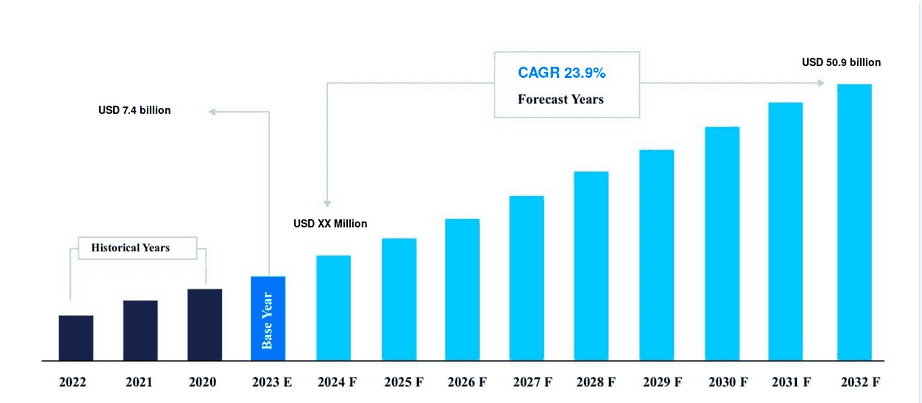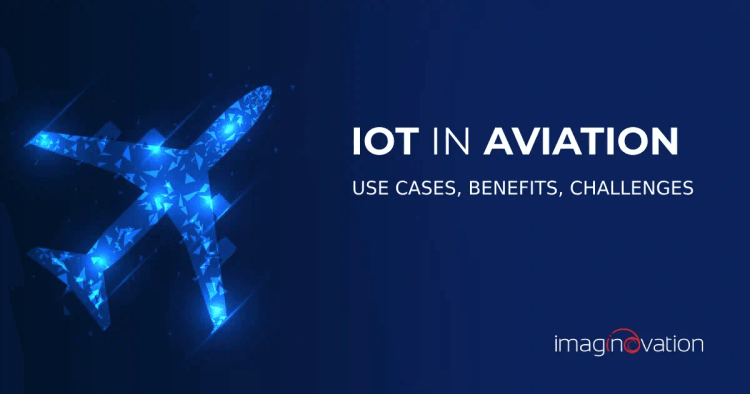Emerging technologies have led to massive transformations in different industries. Thankfully, the aviation sector has not lagged.
From sensors that facilitate predictive maintenance to biometrics that automate passengers’ verification, it’s easy to see the impact of aviation technology.
This article seeks to shed more light on one of these technologies: the Internet of Things. You will learn about its benefits, use cases, and future IoT trends in aviation. Let’s dig in:
Understanding IoT in Aviation
At its core, aviation IoT entails integrating elements of IoT technology into aerospace applications. These elements include sensors, interconnected devices, and even systems, with the ultimate goal of enhancing aspects such as
- Operational efficiency
- Passengers’ safety and experiences
- Predictive maintenance
This aviation technology makes it possible to collect, analyze, and relay information in real time. This expedites the decision-making process while improving the efficiency of aerospace functions.
The chart below shows IoT’s rapid adoption in aviation. In 2022, it was estimated at just $7.4 billion. However, it’s expected to increase to $50.9 billion by 2031, representing a 23.9% CAGR. In this next section, you will learn about the specific applications of IoT in aviation.

Key Use Cases of IoT in Aviation
You only need to look around to see how indispensable IoT technology is to the aviation industry. Applications range from complex functions like flight operation and aircraft maintenance to simpler ones like baggage handling.
It’s important to note that these applications are made possible through IoT’s integration with the System Wide Information Management (SWIM).
Without using too much technical jargon, SWIM is the system that allows for information exchange between air traffic users. Information here includes flight data, weather patterns, surveillance details, etc.
Below is a more detailed breakdown of IoT’s use cases in aviation:
Aircraft Maintenance
One of the most critical applications of IoT in aviation is aircraft monitoring. In this case, IoT sensors are installed on an aircraft’s engine to monitor performance metrics. The main parameters assessed are pressure, temperature, and vibration.
Once these sensors capture data, they transmit it to ground control via SWIM. This ensures that engineers on the ground have up-to-date information regarding the engine’s health and functioning. As such, they can plan maintenance ahead of time, reducing potential downtime.
Flight Operations
Another area where IoT has proven useful is in flight operations. Special IoT gadgets are installed in the cockpit, providing real-time stats on air traffic, climate conditions, and the airplane’s performance.
This data is then relayed to air traffic control crews on the ground, enabling them to make more informed decisions. For instance, they can use this data to recommend routes that reduce delays and maximize the plane’s fuel efficiency.
Passenger Experience
IoT’s application is not limited to aircraft performance. If used intelligently, it can also enhance travelers' and passengers' experiences. For instance, airlines can leverage IoT devices to customize a passenger’s entertainment and in-flight menu.
Panasonic Avionic’s In-Flight Connectivity is a good case in point. This in-flight WI-FI system allows you to access the Internet during your flight. You can stream a movie, contact loved ones, or even work.
Baggage Handling
Thanks to IoT, passengers no longer have to worry about losing their luggage in airports or during air travel. Airlines, like Delta, now incorporate an RFID inlay into every baggage tag for real-time monitoring. Passengers can then monitor their luggage using mobile apps connected to these sensors.
Airport Infrastructure
A lesser-known application of IoT is improving airport infrastructure. To put things into perspective, consider Schiphol Airport, which rolled out its own IoT network a few years ago.
It installed sensors on various infrastructures, such as conveyors, escalators, and HVAC systems. These sensors relay relevant data, making monitoring the equipment's performance much more effortless.
Supply Chain Management (SCM)
Effective supply chain management is pertinent to the success of the aviation industry. Aircraft, critical parts, and materials must be delivered in a timely fashion to ensure smooth operations.
IoT comes into play by providing real-time tracking capabilities. Aviation mechanics can keep tabs on the movement of parts and, hence, schedule checks and maintenance accordingly.
Benefits of Implementing IoT in Aviation
Deloitte conducted a study investigating IoT’s impact on aviation, and the results are undeniable. 67% of respondents - who were airline leaders- reported that they’ve noticed tangible benefits since adopting IoT. Another 86% said they expect to see these advantages within three years. Here’s a more in-depth review of these perks:
Improve Operational Efficiency
A key benefit of using IoT in aviation is boosting operational efficiency. With IoT sensors collecting and relaying crucial information in real-time, the ground crew is able to make smart decisions, streamlining underlying operations.
Enhance Safety
IoT sensors report on two key things: weather patterns and engine performance. In doing so, they enable the air traffic control officials to offer prompt advice when needed. This ensures that pilots take necessary measures to keep passengers and flight crew safe.
Reduce Costs
As stated earlier, predictive maintenance is one of the greatest applications of IoT in aviation. Sensors attached to the engine and other key elements relay data regarding their performance. This enables the aircraft engineers to conduct necessary maintenance, thereby preventing accidents and costly repairs down the road.
Improve Customer Satisfaction
IoT solutions also improve passengers’ experience in several ways. First, they offer real-time updates regarding arrival and departure times, unforeseen changes or delays, and gate assignments.
Second, IoT technology enhances entertainment by making in-flight connectivity possible. Such solutions improve their overall traveler experience and satisfaction.
Easier Tracking and Management
![]()
Thanks to IoT solutions, passengers need not worry about their luggage getting lost or mishandled.
You can now attach an RFID chip to your suitcase or carry-on tag and monitor its position via a mobile app. Airlines also use this mechanism to track and manage assets like maintenance equipment and luggage carts.
Enhances Environmental Conservation
Another perk that people rarely consider is the IoT’s contribution to minimizing the environmental effects caused by aviation. The IoT sensors relay data that helps pilots identify optimal routes.
This, in turn, reduces fuel consumption, thereby decreasing carbon emissions. Furthermore, predictive maintenance ensures that every aircraft runs optimally, minimizing environmental effects.
Challenges and Solutions in IoT Implementation
As seen above, IoT solutions hold potential for the aviation industry. However, implementing these technologies is no mean feat. Listed below is a list of the hurdles you’re likely to encounter and their respective solutions:
Interoperability
Leveraging IoT in aviation means incorporating completely new technologies into the existing infrastructure.
Unfortunately, a significant portion of the aviation sector still relies on legacy systems, making compatibility challenging. Even if you successfully integrate IoT into the current mechanisms, they will require regular updating and maintenance.
The best way to ensure a seamless transition is to hire a licensed and experienced IoT service provider. This expert can integrate and update the solutions regularly to ensure optimal performance.
High Initial Costs
Implementing IoT solutions in aviation is expensive. While the integration may offer many benefits, the required costs can prevent management from green-lighting it.
The easiest way to overcome this is to split the project into manageable milestones. Identify the required costs for each and then roll out the technology in phases. This offers ample time to raise funds for the next phase while mitigating potential risks.
Security Issues
Transmitting data via IoT devices always presents a security risk. Unfortunately for the aviation industry, security breaches can have severe repercussions. These range from operational interferences (that cause flight delays) to the risk of life loss in the event of a crash or hijack.
To prevent this, work with an IoT vendor who understands aviation security measures. Such a professional will know the protocols to integrate to prevent security breaches.
Inadequate Data Infrastructure
IoT networks work primarily by transmitting data from one component/ system to another. As such, airlines and other industry players need the right infrastructure to handle large volumes of data. Additionally, these systems should be capable of processing data in various formats.
Industry players should plan accordingly before adopting IoT. This way, they can acquire the necessary infrastructure to guarantee a seamless transition.
Future Trends in Aviation
You now have a solid understanding of IoT’s role in aviation. But what does the future look like for this sector? Which trends can we expect in the intersecting world of aviation? Here are some of the things you can look forward to:
Blockchain in Aviation Supply Chain Management
One trend likely to occur is the adoption of blockchain technology in aviation SCM. The concept behind this is to increase transparency and security among the players involved.
To be more specific, suppliers can record production updates on one shared ledger. And with IoT at play, the stakeholders can ensure that this data is only shared with relevant parties.
Edge Computing for Data Processing
Another trend that’s likely to occur is the introduction of edge computing. The premise of this technology is to process data right at the periphery (the closest point to where it’s produced). This is contrary to what happens, which is to transmit data to a centralized location.
IoT sensors usually generate large amounts of data, which requires real-time processing. Leveraging edge computing in IoT would allow faster processing and reduced latency.
AI Integration
As more players learn about IoT benefits for aviation, we’re likely to see AI integration as well. More specifically, combining AI-driven decision-making algorithms with IoT can lead to more innovative solutions. This can lead to quicker data analysis, helping optimize flight routes and predict maintenance more efficiently.
Also Read: 8 Sectors That Can Benefit the Most from IoT Development
Propel Your Aviation Business Forward with IoT Innovation by Imaginovation
As seen above, the Internet of Things is crucial to the aviation industry's success. It increases efficiency, enhances passengers’ safety, and minimizes environmental effects.
However, making the most of IoT in aviation requires expertise. Partnering with a technology partner like Imaginovation guarantees a smooth integration process. Beyond integration, our IoT software development team will help you make the most of this technology, giving you an edge over your competitors. Are you ready to reap the benefits of IoT in aviation? If so, contact us, and we will show you how to get started.
Let's Talk.
Ready to build an app, but not sure where to start?
We've got you covered. Click the button below to get started.





